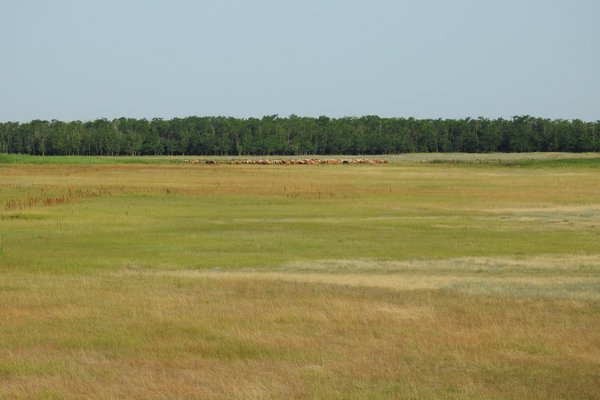Hungary
Hortobágy
Hortobágy National Park - the Puszta is the biggest grassland that remains in Central Europe.
Hortobágy sustains a pastoral society with cattle, sheep, oxen, and horses, tended by herdsmen. The landscape features numerous manmade structures such as Early Bronze Age burial mounds, tells that mark the sites of ancient settlements, bridges, and csárdas (inns).
Community Perspective: “It evokes flatness and dullness and general boredom”, according to Nan quoting a German proverb. Large parts of the WHS are protected and can officially only be visited with a special permit (although this doesn’t seem to be frequently checked). Hubert and Clyde have pointed out some things (birds) to see in the areas that you can explore on your own. Tiszacsege fish csarda is recommended for an authentic lunch.
Site Info
Official Information
- Full Name
- Hortobágy National Park - the Puszta (ID: 474)
- Country
- Hungary
- Status
-
Inscribed 1999
Site history
History of Hortobágy
- 2003: Name change
- From "Hortobágy National Park" to "Hortobágy National Park - the Puszta"
- 1999: Inscribed
- Inscribed
- 1988: Rejected
- Has RAMSAR and Biosphere inscription but not important enough for WHS
- 1988: Requested by State Party to not be examined
- Type
- Cultural
- Criteria
- iv
- v
Links
- UNESCO
- whc.unesco.org
- Official
-
- hnp.hu — Official website of the National Park
- Related
-
- national-park.hungaryguide.info — National Parks Hungary
All Links
UNESCO.org
- whc.unesco.org — whc.unesco.org/
Official Website
- hnp.hu — Official website of the National Park
Related Resources
- national-park.hungaryguide.info — National Parks Hungary
Community Information
- Community Category
- Cultural Landscape: Continuing
Travel Information
Recent Connections
-
No Map
-
Name changes
Puszta added (2003) -
Astronomy and Astrology
"An important part of this heritage is …
Connections of Hortobágy
- Geography
-
-
Dark-sky preserve
Hortobágy Starry Sky Park
-
- Trivia
-
-
Depicted in Mizielinska Maps
Taurus cattle, Great Plain, Sweep wellSee i.pinimg.com
-
Largest cultural WHS
74,820 ha
-
- History
-
-
Bronze Age
Early Bronze Age burial mounds (kurgans) -
Neolithic age
"Also found in the park are the low mounds (tells) that mark the sites of ancient settlements back from the Neolithic" (OUV)
-
- Ecology
-
-
Otters
In the fishponds -
Steppe
Pannonian Steppe. Conservation importance for some threatened species that also occur in the Kazakh steppe. However, it is a man-made or secondary steppe. (AB ev Saryarka) -
Aurochs
The "Hungarian Grey" also known as "Hungarian Steppe cattle is an ancient breed of domestic beef cattle indigenous to Hungary" (Wiki). It is believed to have been developed from Aurochs (among others. A herd is maintained in Hortobagy and is involved in a project to breed "reconstructed Aurochs"See www.hnp.hu
-
Turtles and tortoises
European pond terrapins -
Swamps and Marshes
"The Puszta, represented by the Hortobágy National Park, is a complex mosaic of natural grasslands, loess ridges, alkaline pastures, meadows and smaller and larger wetlands (mostly marshes)" (official description)
-
- World Heritage Process
-
-
No Map
-
Ten years or more to inscribe
1988-1999 -
Incorrect UNESCO 'Number of locations'
no separate map, but the maps in the nomination file (page 50/51 and 95/100) show about ten different areas of various size
-
- Human Activity
-
-
Pastoralism
a grassy plain with cattle, sheep, oxen, horses, tended by herdsmen -
Aquaculture
the creation of artificial fishponds between 1914 and 1918 and again in the 1950s (AB ev)
-
- Constructions
-
-
Tell
-
Notable Bridges
Nine Arch Bridge (the longest stone bridge in Hungary) -
Prison
12 forced labour camps between 1950 and 1953See www.magtudin.org
-
Horse Stables
-
Caravanserai
The Csárdas
-
- WHS on Other Lists
-
-
World Biosphere Reserves
Hortobágy (1979) -
Natura 2000
Hortobagy NP -
Ramsar Wetlands
Hortobagy, 1979 -
European Destinations of excellence
Hortobágy (2008)See ec.europa.eu
-
- Timeline
-
-
Built in the 2nd Millennium BC
The nomadic group who arrived around 2000 BC at the end of the Bronze Age were the first to leave their imprint on the natural landscape in the form of many burial mounds (kurgans ).
-
- Science and Technology
-
-
Astronomy and Astrology
"An important part of this heritage is the celestial knowledge of the shepherds of the Puszta."
-
- WHS Names
-
-
Name changes
Puszta added (2003)
-
News
No news.
Recent Visitors
Visitors of Hortobágy
- Adrian Turtschi
- Alexander Barabanov
- Alexander Lehmann
- Ali Zingstra
- A. Mehmet Haksever
- Andrea Szabo
- Argo
- Astraftis
- Atila Ege
- Bamse
- BaziFettehenne
- Bin
- Bodil Ankerly
- Brendan Carroll
- Carlos Sotelo
- Cezar Grozavu
- Christian Wagner
- Clyde
- Csaba Nováczky
- CugelVance
- Dagmara
- daneva
- Dan Pettigrew
- David Aaronson
- David Marton
- debatecoach
- Dimitar Krastev
- Dr. Caligari
- Els Slots
- Erik Jelinek
- Eva Kisgyorgy
- Gabor
- Geert Luiken
- George Gdanski
- GeorgeIng61
- Harry Mitsidis
- henrik_hannfors
- hszaby
- Hubert
- Hurrvinek
- Iain Jackson
- Ivan Rucek
- Jakob F.
- Janina Lehmann
- Jarek Pokrzywnicki
- Jezza
- Joel on the Road
- Jonas Kremer
- jonathanfr
- Joyce van Soest
- Judit Andrea Juhász
- KarenBMoore
- Kerékgyártó
- Kurt Lauer
- kutasp
- Lara Adler
- Lisu Marian
- Luboang
- Lucas Del Puppo
- Luis Filipe Gaspar
- Maciej Gil
- Martina Rúčková
- Marton Kemeny
- Michaela0705
- Mikko
- MMM
- nan
- Nihal Ege
- Patrik
- Peter Lööv
- Philipp Leu
- Philipp Peterer
- Pincze
- Rafał Kałczuga
- Randi Thomsen
- Reza
- Roger Ourset
- Roman Bruehwiler
- Roman Raab
- Sandmann15
- Schnitzel
- Sergio Arjona
- Shandos Cleaver
- Slavi
- Solivagant
- Stan
- Stanislaw Warwas
- Svein Elias
- Szabolcs Mosonyi
- Szabo Viktoria
- Szucs Tamas
- Tamara Ratz
- Taotao Chen
- Tarquinio_Superbo
- Tcchang0825
- Tevity
- Thomas Buechler
- Thomas van der Walt
- Tim Allen
- triath
- Tsunami
- Vanessa Buechler
- WalGra
- Wojciech Fedoruk
- YaroMir
- Yevhen Ivanovych
- Zoë Sheng
- Zsuzsanna Forray
Community Reviews
Show full reviews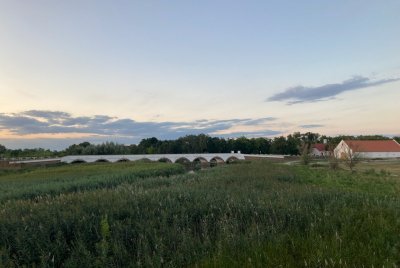
August 2024 - On my Birthday we started with a tour in Baradla Cave, drove to Tokay and finally reached Hortobagy on late evening. Although most of the WHS is just Puszta, Hortobagy offers a few extras. Just next to the Nine Hole Bridge there is a wonderful restaurant (Hortobágyi Csárda) with local traditional meat dishes. It was a perfect spot to quit the day. For the Sunset it is best to walk the bikepath south of the Nine hole bridge. in Hortobagy we could stay overnight with our Camper even with free WLAN.
Next morning we tried to spot some cows and horses.
Keep reading 0 comments
I visited this WHS in 2022 and didn't have high expectations. However, from the moment I arrived on the never-ending flat terrain to the moment I left, I was positively surprised. Having read Hubert's and Nan's reviews, I made an extra effort to put aside my birdwatching bias, and I tried to focus on also covering the man-made structures which shaped this cultural landscape.
You'll notice you have reached the Hortobagy plains, once wherever you look the sky meets the land on the infinite horizon. The landscape of this romantic region has inspired countless works by celebrated painters and some of the greatest Hungarian poets have sung its praises, a bit like the Tuscan landscape of Val d'Orcia. Especially in spring, gazing at the endless flat panoramas, the breeze will take you by surprise with its scent of sweet chamomile and mint. The only noises are the stamping of hooves, the ringing of cattle bells and perhaps the wafting of birds' wings. The steppe landscape of Hortobagy reminded me of the Saryarka Kazakh steppe landscape on a much lesser scale or the El Rocio horseback landscape near Donana National Park in Spain. However, Hortobagy is a unique example of harmonius interaction between human beings and nature.
The earliest human settlers left their imprint on the landscape in the form of so-called kurgans (kunhalom), or rounded burial mounds visible on the endless horizons. Besides their archaeological and cultural value, these tumuli provide a habitat for vegetation characteristic of the …
Keep reading 0 comments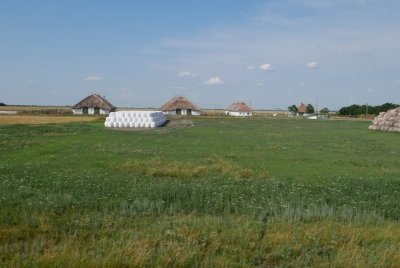
Following in Hubert's footsteps and not withstanding his two merciless reviews of the two eastern Hungarian world heritage sites, I combined a visit of Tokaj with a visit of the Puszta, i.e. Hortobagy. Now, in German comparing a place to the Puszta is never a compliment. It evokes flatness and dullness and general boredom. So, even discounting Hubert's review, I wasn't hoping for much.
Interestingly, the Hungarians have marketed the Puszta quite strongly to tourists. Hungary was already a tourist destination for western tourists before the Iron Curtain came down. Visits to the mystical Puszta were then (and still are) popular day trips for visitors to Lake Balaton or Budapest. Just google Puszta Day Trip. You get to see the traditional Hungarians living authentic traditional lives, riding traditional horses, sitting in traditional carriages... A true authentic experience.
To make sense of the Puszta, I think it's worth to go back a bit in history to the founding of Hungary. Hungary forms the western most part of the Eurasian steppe: the Hungarian Plain. The Eurasian steppe was for millennia ruled by horse nomads with wave upon wave entering Europe. There were the Scythians, the Huns, the Goths, the Avars, the Bulgars, the Mongols and many more.
These horse nomads would run into two problems over time. First and immediate, the mountains of central Europe (Carpathians, Alps) were not suited to horse archer warfare. Second, they would lose their edge over time and either the settled people such as …
Keep reading 0 comments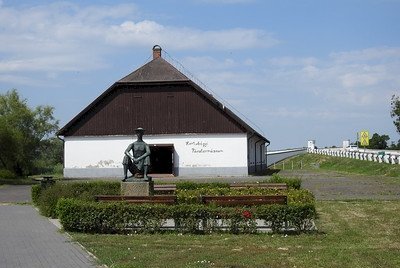
Hortobágy National Park - the Puszta is a steppe landscape where man has left only temporary structures. Shepherds graze their horses, cows and sheep (species adapted to local conditions) here on the barren land. Fishponds were built in the early 20th century to vary the land use more. The park is also known for its variety of bird species. I had planned to focus mainly on the park’s natural features (though it’s a cultural site on our List) and I even brought a travel guidebook to make the most of it.
I had 1 full day here (stayed for 2 nights) and focused on Route 1 described in the guidebook. This is an all-day circuit by car, with stops and short walks along the way. Officially you do need a permit to visit any site in the national park that lies off the main road, but since the Visitor Center wasn’t open yet at 8 am when I went out I decided to start without one (in the end I never encountered any controls).
The route first goes eastwards from the town of Hortobagy, on the busy road B33. There you’ll find 3 lookout towers. I climbed 2 of them – they provide wide views over the plains but you actually don't see anything of much interest. Afterward, you turn left off the main road and make a full loop via the northern side of the park. Here too the road is busy at first and there is …
Keep reading 0 comments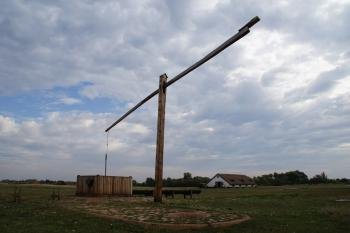
Puszta, a well-known term that is inseparably linked to Hungary. But what can be expected from this WHS? The last remains of an unspoilt cultural landscape with traces of the interaction between man and nature and pretty examples of rural architecture - sounds pretty good? Or flat and vast grasslands that looks the same in every direction, a paradise only for bird watchers - sounds rather dull and boring? To answer right away: it's a bit of both, but for me the boring parts outweigh the interesting impressions.
The village of Hortobágy is the centre of the park, here you find the visitor centre, the best-known csárda (with pretty good food), a shepherd's museum, and the Nine Arch Bridge (looks better on photos than in reality). Hortobágy has various opportunities for accommodation, we stayed for one night and were lucky to get the last available room in the hotel next to the visitor centre. There are also nice examples of vernacular architecture in and around the village and the nearby Mata Stud. The photo shows a farmhouse with an upstanding steep well, the symbol of the Puszta.
Large parts of the WHS are protected and can only be visited with a special permit and a guide, but there are three trails where the National Park is accessible (day tickets at the visitor center). First we went to the fish ponds at Halasto, a large system of artificial ponds that were created about hundred years ago, mainly for carp culture. Today …
Keep reading 0 comments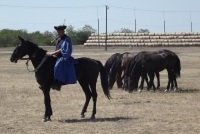
My visit to Hortobagy coincided with a fair in the village, to which people from all over Hungary had come. So besides seeing the heart of the National Park, there was also entertainment and traditional handicrafts and food.
However I had come to see the Puzta, so I was directed to Mata, the horse stables to the north of the village. Here I joined a fleet of horse-drawn carts for an inpection tour of the horses, sheep, oxen, water buffalo and grey cattle, all spread out across the grassy plains.
Trains from Eger to Debrecen call at Hortobagy station, situated midway between the village and Mata.
Keep reading 0 comments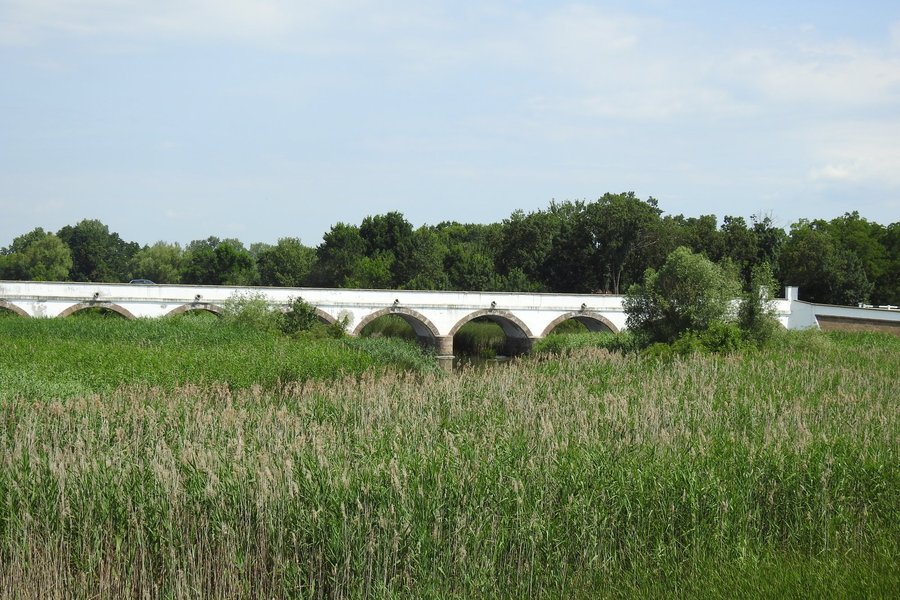
We came to Hortobagy this year on July , only one day because it was on your way to Romania: but we'll come back ; Patkos Csarda Motel is a lovely place; Puszta Camping can be fine too. We love hungary food. And there is such a lot of different birds, even if we dont't stay there during a long time; we spent a good time in a boat on the Tisza Lake and magyar people are so kindly; we can speak english with young people.
Keep reading 0 comments
I visited Hortobagy last year and stayed there for one week which I see optimal. The tourists come mainly for one day which is nothing - there are too many places to be seen. I would add to the text that there are living unique sorts of animals (e.g. grey cattle) and hundreds of birds species partly living there and partly migrating. I see the last year price of entry pass reasonable. In the village Hortobagy there are 3 hotels of differrent comfort and of course prices, camping and some offers for private accomodation - everybody can choose.
Keep reading 0 comments
